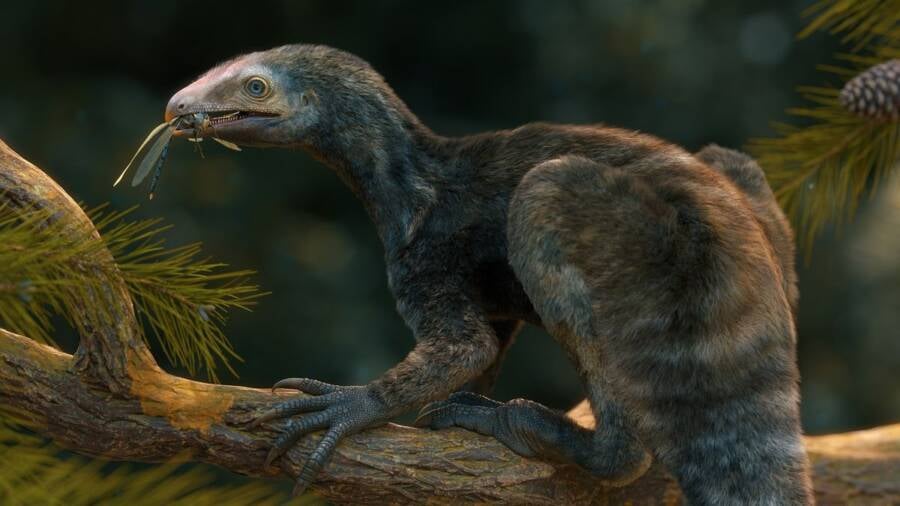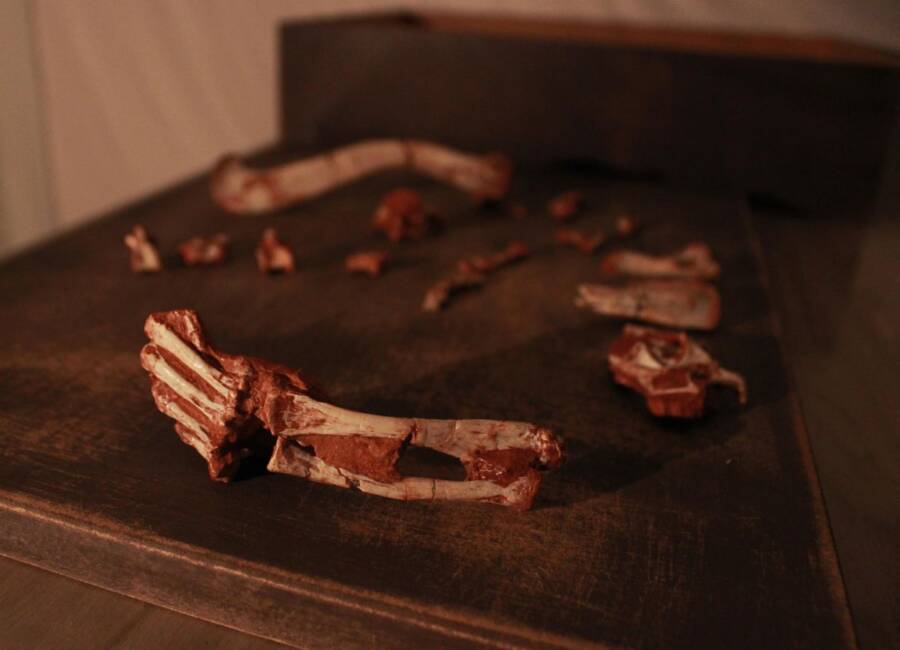The newly discovered Venetoraptor gassenae offers scientists new insight into the lagerpetids, a group of reptiles that gave way to ancient pterosaurs.

Caio FantiniAn artist’s impression of Venetoraptor gassenae.
Paleontologists in southern Brazil have unearthed the fossilized remains of an ancient reptile with long, scimitar-like claws and a beak.
The reptilian creature, named Venetoraptor gassenae by researchers, lived around 230 million years ago during the Triassic period. Paleontologist Rodrigo Müller told Live Science that the reptile likely used its claws, which “look a bit like those of Edward Scissorhands,” to catch its prey or climb trees.
Müller also drew attention to the reptile’s long, sharp beak, saying it likely used this it to devour insects, fruits, and small animals like lizards.
The remains were discovered in a rice farm in Rio Grande do Sul in southern Brazil, where Müller said he immediately noticed that this fossil belonged to a type of creature known as a lagerpetid — ancient creatures that were on a different branch of life than dinosaurs, and likely later evolved into pterosaurs, the earliest vertebrates to be able to fly.
It was the shape of the reptile’s femur that clued Müller into what they had discovered, but further analysis at a lab revealed even more surprising and insightful information.
“The skull and hand were revealed after the laboratory preparation of the specimen,” Müller told Gizmodo. “At this point, this specimen became the most informative lagerpetid ever found.”
Lagerpetids roamed the Earth more than 200 million years ago, and though they share several characteristics with dinosaurs, they also have a few notable differences, like the pterosaurs that came after them.
The clearest differences can be found in their hips and arm bones, with dinosaurs having a hole in their hip bone while pterosaurs and lagerpetids did not.
Müller noted that the newly discovered fossil was especially vital for deepening our understanding of these ancient reptiles, as cranial remains are generally “scarce” for lagerpetids. Uncovering the cranial remains, Müller said, offers researchers “the first reliable look into the face of these enigmatic reptiles.”
“The unusual skeleton of Venetoraptor gassenae reveals a completely new morphotype of pterosaur precursors,” he said.

Janaína Brand DillmanV. gassenae fossils recovered from a rice farm in southern Brazil.
The shape and size of V. gassenae‘s claws confirms at least one suspicion researchers had about lagerpetids — that at least some lineages lost quadrupedalism, preferring instead to move about on two legs.
And although V. gassenae‘s beak is similar to that of a raptor, it actually predated raptor beaks by about 80 million years.
“The ecological role and evolutionary advantage of such a beak in Venetoraptor are uncertain,” the team wrote in the study published in Nature. The presence of the beak also “expands the morphological spectrum of beaks within Pterosauromorpha.”
There is still much that researchers don’t know about lagerpetids, but as always, more specimens yield more and more information about these ancient creatures’ secrets.
“The next steps include non-invasive techniques such as computational tomography in order to reconstruct the brain endocast and hidden structures,” Müller said.
Previously, it was believed that lagerpetids were not as anatomically diverse as pterosaurs or dinosaurs, but Müller noted that by analyzing the shape and size of fossils from 18 dinosaur and 10 pterosaur species, along with their precursors, the team is changing that assumption.
In fact, the more researchers learn about lagerpetids, the more they are starting to believe they may have been as diverse as the pterosaurs that came after them — and perhaps even more diverse than the dinosaurs that roamed the Earth during the Triassic period.
After reading about the discovery of this ancient reptile, learn about the newly discovered ancient whale that may have been the heaviest animal of all time. Or, read about the ancient giant-headed amphibian discovered by German scientists last year.





